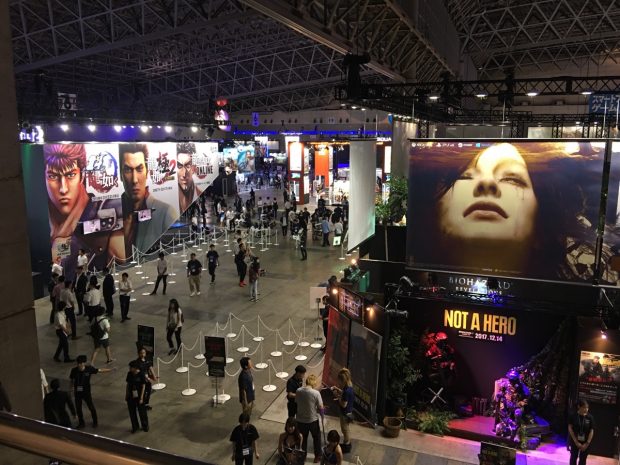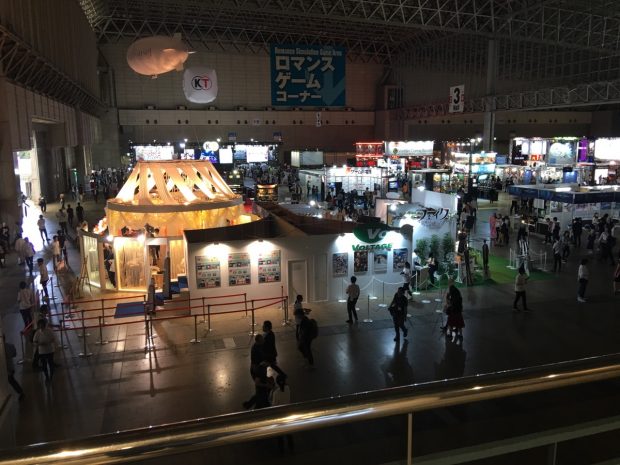In last year’s version of this article, I talked about how the various companies at the Tokyo Game Show were clearly tightening their belts year-over-year. That seems to have continued this year, with some of the smallest booths I’ve seen from certain publishers. Again, the big mobile companies chose to largely sit things out, settling for business desks in an adjoining building over lavish, prop-filled money sinks. While there were many great games on display, one can’t help but feel like this year’s show was missing the spark of previous years. With Nintendo taking their usual pass on the show, VR being on the market for a while, and other hardware platforms hitting maturity, there was no new puppy to fawn over at Tokyo Game Show 2017.
That’s probably why attendance was down for the first time in years. Last year’s show drew a near-record high 271,224 visitors over the course of the four-day event. This year, the show brought in 254,311 visitors. While still a very impressive number, it’s only the second time in the show’s modern history that attendance has dropped from the previous year. One area that did see growth is in the business-to-business section, with the number of companies registered for the Asia Business Gateway matching system up from last year. It seems like the show was counting on its newly-added eSports events to pick up the slack, and it doesn’t appear to have worked out as well as it could have.
Another number on the decline is the number of iOS games being shown. The peak was at the 2014 show where 259 iOS games were on display. That number has been down a little each year, with the 2017 show offering a mere 204 games. Android was up a little from last year, with 214 titles on display. That makes this the first year in a very long while that iOS games weren’t the largest portion of the titles at the show. Second place isn’t so bad, though. To be fair to mobile gaming, almost every platform had fewer titles this year than it did last year. Android, Steam, browser, and VR games were slightly up, but everything else seemed to be in decline.
The big winners this year, at least as far as my eyeballs could tell, were Capcom’s Monster Hunter: World, Konami’s LovePlus Every, and the ever-popular Voltage booth full of romance games. Outside of Konami, the major publishers seemed shy about showing off their mobile games, but it makes sense when you consider the type of crowd that Tokyo Game Show draws. The Indie Corner was once again the place for mobile gaming fans to be, though this year you really had to rub elbows with the Switch crew. It’s always great to see developers coming from all over the world to show off their stuff. It may be a small area on the show floor, but the sense of fun and camaraderie in the Indie Corner is still one of my favorite parts of Tokyo Game Show.
It’s hard to say what the Tokyo Game Show can do to ensure the show next year picks up steam again. With so many platforms past their peak and the lack of any recent mega-hit new IPs, it could just be that this is unavoidable. Either way, it’s not as though only having 200+ games to try out means anyone on the mobile side of things is starving. It’s an embarrassment of riches as usual, just a slightly smaller one this year. And hey, it didn’t rain on the day I attended for first time ever, so I’m feeling pretty good about it all.

